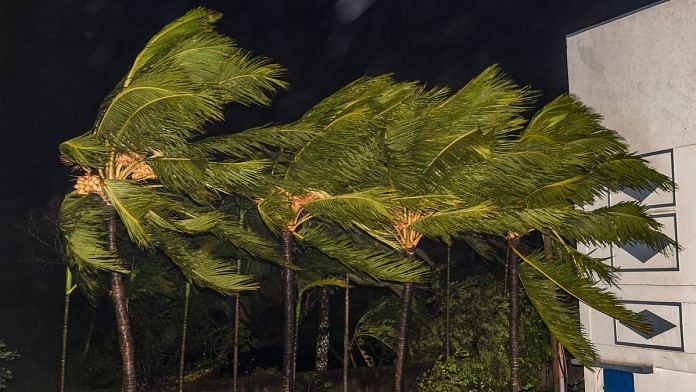Overall, it’s good news that President Donald Trump has declared he’s in favor of planting trees — it’s perhaps the one thing he has in common with people who care about the long-term future of the planet. Trees not only provide a habitat for wildlife, they can mitigate global warming, to an extent.
Promises to plant trees came up at the World Economic Forum in Davos, and in Trump’s State of the Union address — perhaps the greenest promise he’s made since the start of his presidency. Other Republicans are embracing trees as well — including congressman Bruce Westerman of Arkansas, who has proposed his own tree bill. If Trump and other Republicans now want to accept the mainstream scientific view of global warming, that’s good news and we should welcome it.
But before we all go into a group tree-hug with Trump, there are, as it turns out, a couple of caveats about trees. The first is that some people may be mistaking tree planting as a substitute for cutting emissions. Trees can definitely absorb carbon dioxide, but alone they won’t be enough to stop global warming.
We saw this same mistake last summer when a paper in Science exaggerated the power of trees to soak up the CO2 that’s been building up in the atmosphere. The researchers, from the Swiss Federal Institute of Technology in Zurich, estimated that the earth could handle an additional trillion trees — and that these would be enough to soak up about two thirds of all the carbon emitted by humans from burning fossil fuels. To put that in perspective, scientists estimate that the planet held about six trillion trees before humanity started to chop them down and burn them. We’ve reduced the total to three trillion.
Also read: The greatest colonisers on earth? Plants. And this is how they did it
The paper got some big headlines in the press, but the journal subsequently published five rebuttals in the form of letters. University of California Berkeley climate scientist Zeke Hausfather says that the original paper overestimated by a factor of two how much carbon could be absorbed by a trillion trees. By his calculations, tree planting could erase about 8 or 9 years of recent emissions. That’s still impressive, but it’s not enough.
Then there’s the question of where we’d plant a trillion trees. Some of the trees would have to be planted on land that is being used for farming or grazing pasture, or natural savannah that itself is a natural ecosystem, as biologist Robin Chazdon of the University of Connecticut argued in a commentary piece that accompanied the original Science paper. In some areas of tundra, trees might make global warming worse, says Hausfather, by decreasing the albedo — the reflectivity of the ground. Bare bright snow reflects more sunlight than a tree-covered landscape, which helps keep things cool.
“There’s a long history of people thinking there are silver bullet solutions to climate change,” he says, “whether it’s nuclear power or photovoltaics or trees.” He’s calculated that the only way to keep global warming below two degrees Celsius will be to start cutting emissions now, though the trees would buy time — giving us a few more years before we need to cut emissions to zero.
But companies are already jumping on the feel-good potential of tree planting to offset costumers’ carbon guilt. According to a piece in MIT Technology Review, the airline booking app Hopper is offering to donate enough money to plant four trees for every flight you book. The damaging effect of the fight is immediate, while the positive effect of the trees is far in the future.
The benefits of tree planting are also fragile and easily reversed. The excess carbon that’s causing trouble today had been buried in the ground for millions of years. Any carbon that gets absorbed into plants comes right back out if the plants die from disease, dehydration or overheating, or get burned down — as happens increasingly often in massive wildfires. There are ways to get carbon back underground — experiments that might be scaled up in carbon capture technology. But none of this is any substitute for leaving fossil fuels in the ground.
Also read: Nobody wants to stop flying even as shaming over carbon footprint grows






